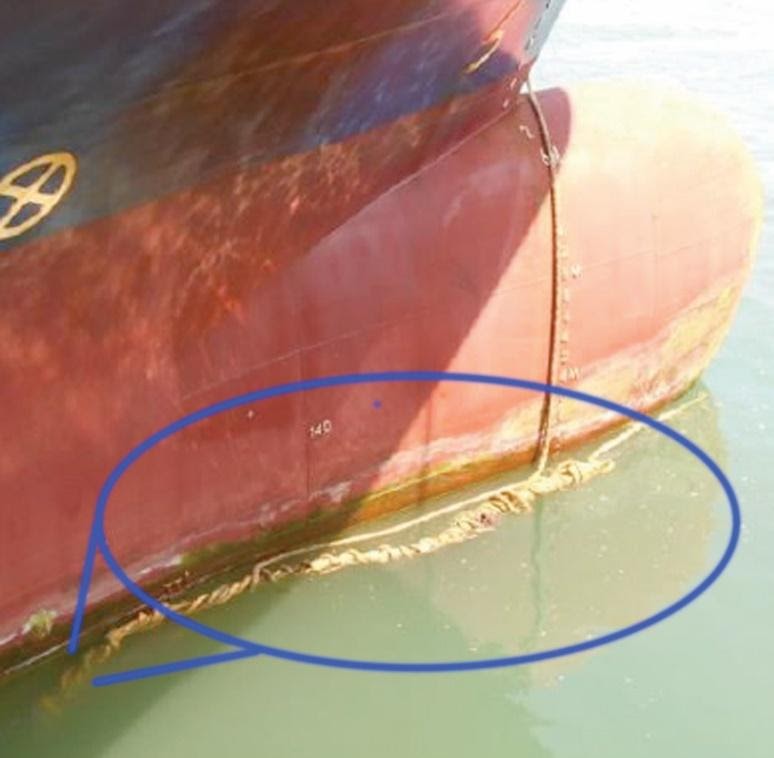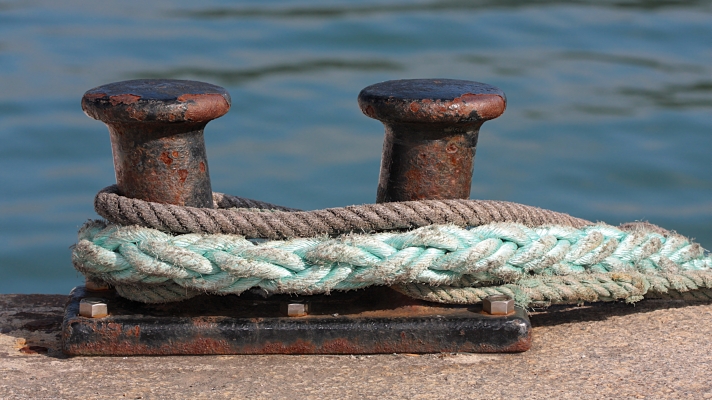Due care must always be taken with lines near a working bow thruster. A recent Mars Report features an incident in which the mooring lines were drawn into the thruster tunnel fouling the propeller blades.
The Mars reports are compiled (anonymously) by The Nautical Institute to prevent other accidents from happening. A summary of this incident:
A tanker in ballast was berthing starboard side to in a strong current, running at nearly five knots. The master was on the bridge and the vessel was under the guidance of a pilot. A small line handling boat was attending to help achieve the planned mooring pattern of three head and aft lines as well as two forward and aft spring lines.
To begin, forward and aft springs were set using the bow thruster at seventy per cent, with the rudder at port twenty degrees and the main engine running ahead as per pilot’s instructions, in order to keep the vessel close to the berth. Next, the three head lines were passed to the line handling boat forward. Two of the head lines slipped off the bollard and more slack was payed out than needed. The lines floated on the water. Before they could be mastered by the launch personnel, they were entrained into the starboard inlet of the thruster tunnel, fouling the propeller blades.

Advice from The Nautical Institute
- Ideally, lines should not be allowed to float near a working bow thruster.
- Vessels in ballast have their bow thruster tunnels nearer to the waterline than loaded vessels and are at increased risk of mooring lines being sucked in.
Mars Reports
This accident was covered in the Mars Reports, originally published as Mars 202031, that are part of Report Number 332. A selection of this Report will also be published in SWZ|Maritime’s July/August 2020 issue. The Nautical Institute compiles these reports to help prevent maritime accidents. That is why they are also published on SWZ|Maritime’s website.
More reports are needed to keep the scheme interesting and informative. All reports are read only by the Mars coordinator and are treated in the strictest confidence. To submit a report, please use the Mars report form.








